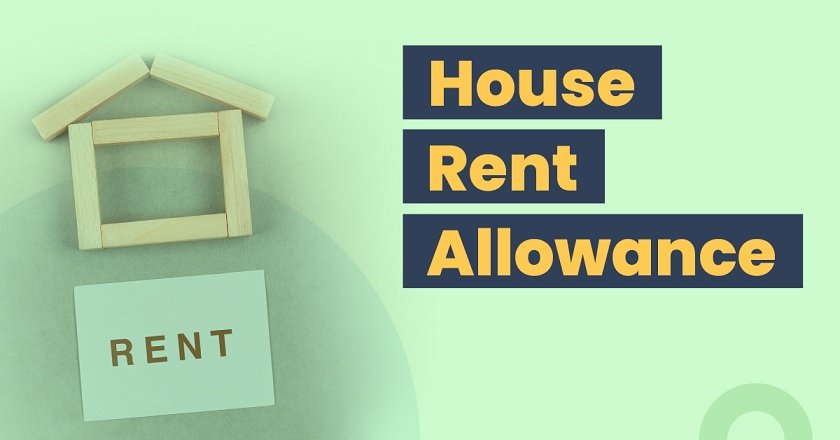The House Rent Allowance (HRA), which reduces taxable income by paying rental expenses, is an essential part of many compensation packages for salaried persons. It is significant beyond just the money; it is necessary for tax compliance. It is crucial to properly document HRA exemptions, guaranteeing correct records of rent payments and other required paperwork.
Furthermore, it’s critical to calculate house rent allowance accurately because mistakes can result in tax obligations and trouble during audits. This introduction emphasises how crucial it is to comprehend, record, and compute HRA precisely to guarantee adherence to tax laws.
Understanding HRA Exemptions
Exemptions from the House Rent Allowance lower taxpayers’ taxable income, providing relief. Those on salaries who receive HRA as part of their benefits are eligible for this exemption. The city of residency, the rental agreement, and the amount of rent paid are examples of eligibility criteria.
There are various kinds of HRA exemptions, such as those for rent paid to parents or relatives and exemptions for self-occupied homes. Taxpayers must comprehend these exemptions to optimise their tax benefits and guarantee compliance with applicable legislation.
Eligibility Criteria for Claiming HRA Exemptions
Salaried people who want to claim HRA exemptions need to fulfil the following requirements:
Rent agreement in effect for the claim period
- Landlord’s PAN card is available
- Rent paid surpasses 10% of basic salary
- Rent paid does not exceed 50% of the basic salary
Furthermore, the exemption proportion differs according to the city in which one resides:
- Non-metro towns: 40% of HRA is exempt
- Metro cities (Delhi, Mumbai, Chennai, Kolkata): 50% of HRA is exempt.
To maximise your tax benefits and claim HRA exemptions, complete these requirements and keep the required documentation.
Best Practices for Documenting HRA Exemptions
HRA exemption documentation demands meticulous organisation and attention to detail.
- Lease agreements, rent receipts, and evidence of payment are all necessary paperwork. For convenience, keep a digital file or folder with dated and clearly labelled contents. To guarantee correctness and completeness, check and update documents regularly.
- For accurate computations, confirm rent amounts and associated tax rates. To calculate house rent allowance, use online HRA calculators.
- Save papers safely, and keep a backup copy on hand.
By adhering to these recommended standards, you’ll guarantee adherence and prevent mistakes or overlooked exemptions. Recall that the secret to optimising your HRA benefits is correct recordkeeping.
Calculating HRA
Comprehending the relevant regulations and guidelines is necessary to calculate house rent allowance exemptions accurately. To compute HRA exemptions accurately, you must consider many aspects, including the amount of rent paid, the HRA received, and the city of residency.
Accuracy is crucial since inaccurate estimates might result in fines or tax responsibilities. This procedure can be made simpler and more accurate by using online HRA calculators. The rent amounts and related tax rates must be input accurately to get precise results and maximise tax benefits while adhering to rules.
Case Study
A salaried worker encountered difficulties claiming an HRA exemption without careful records. He struggled to provide evidence of his rent payments during the audit, which led to the denial of his exemption and ensuing tax obligations. This example emphasises how crucial it is to keep accurate and structured records containing proof of payment and rent receipts.
For taxpayers, it is an important reminder to handle their records carefully to guarantee compliance and prevent any financial consequences that may arise from audits.
Common Mistakes to Avoid in HRA Exemption Documentation
Common errors to avoid when establishing HRA exemptions include missing necessary paperwork, inaccurate calculations, and incomplete documentation. These mistakes may result in extra tax obligations, denials of exemptions, and even fines. Verify documents, double-check computations, and ask tax experts or internet resources for help to avoid severe repercussions.
Furthermore, ensure all necessary paperwork is submitted on time, keep accurate and well-organised records, and carefully verify all material before submitting it. Through awareness of these typical errors and proactive measures to avoid them, taxpayers can guarantee adherence and optimise the advantages of HRA.
Conclusion
Correct documentation of HRA exemptions is essential to guarantee compliance and optimise tax advantages. By adhering to recommended guidelines, evading typical errors, and verifying computations twice, taxpayers can ensure that their exemptions are approved without problems.
Remember that compliance and precise documentation result in financial savings and comfort of mind. Make sure to make mistakes to avoid losing out on penalties or exemptions. Invest the time to do it correctly so you may profit from HRA exemptions.

